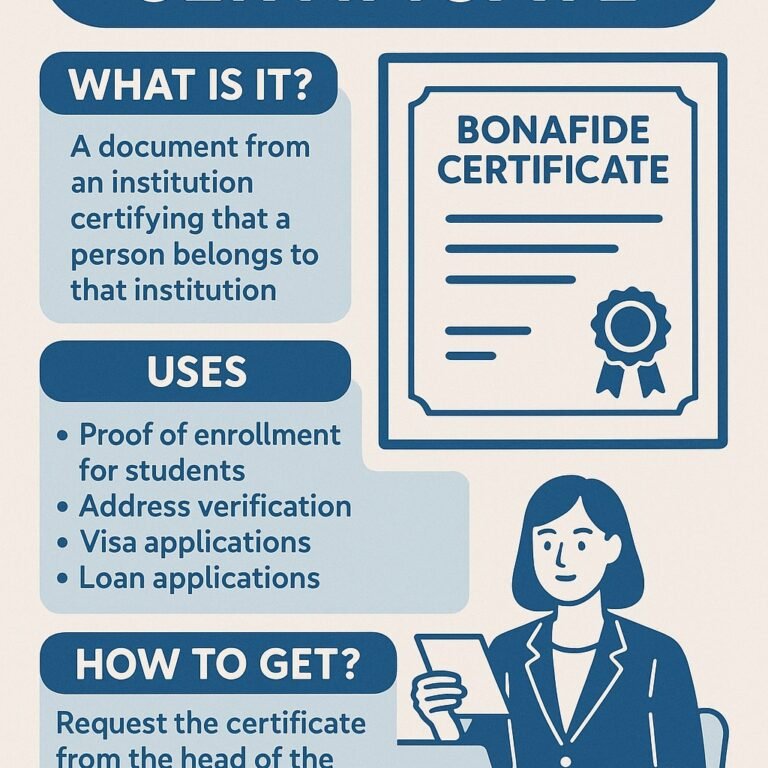Hi Future Leaders, Scholars and Innovators! Now, let’s visit the three-letter acronym that likely crosses your brain like a swatted mosquito more often than you’d like: GPA. For students in India, the Grade Point Average or GPA full form seems odd, if not potentially disturbing at times; as our education system calculates scores more often than not as a percentage or CGPA. However, as the world continues to place value on GPA, as students in India – that’s extremely important for you, especially if you are considering study abroad opportunities, potential top scholars, or chasing internship goals.
But the beauty of it is this: understanding GPA and its changing role, along with effectively approaching it is much less complicated than you probably think. This is about so much more than a number! This is about changing your course of study into a language everyone understands, and getting the most out of your journey and process!
In this conclusive document, we are going to break down the essential details and updates to how GPA period for students from India in 2025 (and beyond). We are going to help you understand GPA full form, how to demystify GPA calculation, and assess what it actually means for your future; as well as provide strategies to make progress towards your goals!
Why All the Fuss About GPA?

For decades, the Indian academic environment was based on percentage scores. So why the sudden shift toward GPA? The answer is globalization. With many Indian students wanting to study at international universities and multinational corporations looking at young Indian talent, a standardized academic metric, such as GPA, becomes clear.
You can think of GPA as a universal academic currency that allows institutions and employers around the world to quickly assess your academic standing regardless of the different grading systems in different countries.
Yet, it’s not just international applications. Here is where the GPA sticks out:
– International University Admissions: This is probably the biggest reason why students care about GPA. Universities in the US, Canada, the UK, and many European countries almost always use the GPA on a 4.0 or 5.0 scale when considering students for admissions. Converted GPAs are often the first of which admissions committees consider when reviewing applications.
– Scholarships and Financial Aid: Merit scholarships and need-based financial aid all have increasingly specific GPA requirements. A solid GPA (usually 3.0 or 3.5 and above) will often be a primary exclusionary state of eligibility. In fact, many more competitive scholarship opportunities specifically list GPA cut-off requirements for Indian students wishing to study abroad.
– Internships and campus placements: Yes, even in India! Many employers (especially those offering international placements or highly competitive positions) are particularly screening for GPAs when filtering applications for campus placements, and even internships. Employers are often looking for signals of consistency and quality of work, and GPAs are certainly related to them.
– Graduate/Post-Graduate Programs: For MBA, MS or PhD programs, your undergraduate GPA (or converted equivalent) will be a key or baser element to your application.
– Student Organizations and Honors: Obtaining a certain GPA breadth will often qualify you for transformative experiences within academies such as joining, academic clubs, honour societies, or even the Dean’s List, which will enhance your overall development portfolio.
“Want to pursue MBA from best college? Discover the tier 1 colleges for MBA“
GPA full form and meaning
Reading about the term GPA and still not aware about the full form? GPA full form is Grade point average. Grade point average is a simply a measuring index or a calculation scale which calculates the academic scores of the student by averaging all the grade points. This grade point reflects the academic success of the students and it measures the score across terms, semesters and years.
Demystifying GPA: Understanding the Different Scales & Calculations
GPA full form is Grade Point average. One of the biggest areas of confusion for Indian students is the number of different GPA scales. Let’s overview the main ones you will see, and most importantly how your Indian percentage or CGPA will convert.
- The 4.0 GPA Scale (most common worldwide): This is the standard GPA scale used in the United States and Canada. Your percentage or grade is converted to points based on a standard scoring where A = 4.0, B = 3.0, C = 2.0, D = 1.0 and F = 0.0. Many universities as well, will have pluses (+) and minuses (-) scoring of grades. An A would be a 4.0, an A- might be a 3.7, B+ = 3.3 etc.
- The 5.0 GPA Scale: Less common, but still used by some institutions, in particular for more advanced/honors programs. An A could potentially be a 5.0
- The 10.0 GPA/CGPA Scale (common in India): A lot of universities, particularly in India, will use a CGPA (Cumulative Grade Point Average) system with 10 points used. Your percentage will easily convert to CGPA, usually directly (… for instance an 85% could convert to an 8.5 CGPA).
Example on a 4.0 Scale:
| Subject | Grade | Grade Points | Credits | Grade Points × Credits |
|---|---|---|---|---|
| Math | A | 4.0 | 3 | 12.0 |
| English | B | 3.0 | 3 | 9.0 |
| Science | A- | 3.7 | 4 | 14.8 |
GPA = Total Grade Points / Total Credits = (12 + 9 + 14.8) / 10 = 3.58
Weighted vs. Unweighted GPA: What’s the difference?
Unweighted GPA: This is a simple average of grades (in other words, all courses are treated equally, regardless of course difficulty); a 4.0 GPA is an unweighted perfect score on a 4.0 scale.
Weighted GPA: This account for difficulty and weights or “points” are assigned for difficult courses such as Honors, Advanced Placement (AP), International Baccalaureate (IB) or advanced university-level electives. For example, an A from an AP course may be assigned 5.0 points (instead of 4.0). Weighted GPA often results in a GPA above 4.0, and places a premium on those students who take advanced courses and challenge themselves academically.
Semester G.P.A. vs. Cumulative G.P.A. (CGPA)
Semester G.P.A. (SGPA): This is your G.P.A. based on a single academic term or semester. It is a snapshot of your academic performance for that particular term.
Cumulative G.P.A. (CGPA): This is your average of all your grades across your full academic program (e.g., your entire bachelor’s degree). This is what universities and employers will generally look at in terms of your academic background.
“Preparing for entrance exams? Read about the CUET-UG exam“
How to Convert Your Indian Percentage/CGPA to a 4.0 GPA (The Important Part!):
This is where we typically see the “recent updates” – not truly new formulas; just constant need for accurate conversions for overseas applications.
Simple Percentage to 4.0 GPA (Common Estimation): A very commonly accepted, albeit seldom more than a simple, formula is : GPA (on a 4.0 scale)=(Your Percentage÷100)×4 Example: If your score is 80% then GPA=(80÷100)×4=0.8×4=3.2
10.0 CGPA to 4.0 GPA: If you earned your university CGPA using a 10.0 scale a common and widely used way to convert is: GPA (on a 4.0 scale)=(Your CGPA÷10)×4 Example: If you’re CGPA is 8.5 then GPA=(8.5÷10)×4=0.85×4=3.4
GPA Calculator: Online GPA calculators are great for rapid and accurate conversions of your percentages/CGPA if you have credit hours for each subject. Many portals for study abroad offer them. Always cross-check with an universities preferred conversion method if they have a method available.
Professional Credential Assessment Services (WES): When applying to US/Canadian institutions you almost assuredly will always need to use a credential assessment service such as WES (World Education Services) as they will have their own proprietary way of calculating your Indian transcripts to an equivalent US GPA and often the evaluation is even mandatory. This is the most official “update” or process for international applicants.
Beyond the Numbers: The Big Picture with Your GPA in 2025
While GPA still matters, the latest trend in admissions and hiring is a shift from strict number to holistic review. This is good news because while you can get in the door with a solid GPA, a good GPA alone will not secure you get hired…
Admissions committees and hiring managers are increasingly also paying attention to:
- Course Rigor: Did you take classes that challenged you? A 3.5 achieved in tough courses often looks better than a 4.0 achieved in easy classes.
- Grades Trend: Did your grades improve over time? An improvement dipslayed over time, and especially growth, growth, growth is very appealing.
- Extracurriculars: What else did you do outside of academia? Leadership, volunteering, clubs and projects display well-roundedness.
- Essays & Personal Statements: What did you write about? Your unique story, motivation and goals can be a powerful way to capture your personality and drive.
- Letters of Recommendation: What is being said about you by your professors or a personal mentor around your character, work ethic and future potential?
- Standardized Test scores: Many universities have moved toward test-optional; however, a strong SAT, ACT, GRE, or GMAT score can be used to strengthen your application if needed.
So, while your percentage remains vital within India, understanding and optimizing your GPA is no longer optional – it’s a strategic advantage.
“Read about CGPA full form, meaning and uses in detail”
How to Increase your GPA: Helpful Tips for Every Student

Stressful? Don’t be! Whether you’re trying to keep your GPA up or make a dramatic increase, here are useful recommendations:
- Understand Your Syllabus & grading process: This may seem easy, but you have to understand every aspect of how each course will be graded (assignments, exams, participation weightings, etc.) so you know how to prioritize your time.
- Master Time Management: College is busy! Use planners, calendars, or an app to define your study time, assignments, and personal tasks. Being consistent is important.
- Attending Classes & Participating in Classes: Just being there isn’t enough. Make sure you’re engaged! Ask questions, participate in discussions, use that time productively. It will help you in the course, and some professors will include your participation as part of your grade.
- Talk to Your Professors: Do not hesitate to stop by during office hours. Professors can be great mentors for clearing up questions or misconceptions, recommending upgrades for future assignments, and can be valuable in discussing potential career paths. In some cases gaining familiarity could lead to a product that would be a stronger recommendation letter.
- Form Good Study Groups: Work with classmates who share the same mentality about school work as you. When you explain a concept to someone, or explore a set of problems together, you develop a better understanding of the subject.
- Address Tough Courses First: Make sure you spend extra time your studying for those courses you find difficult. Go after the work head-on. Don’t let difficult courses scare you off. Get help if you need it (by tutors, online sites).
- Review, Review, Review, Don’t Cram: Consider breaking down parts of your studying into smaller components. You will always retain more material this way than trying to cram all your studying last minute.
- Use Academic Resources: Most universities will have academic resources for free. This could be tutoring services, writing center, academic advising….use them, they are there to help you.
- Balance your workload: Don’t take 3 difficult courses in the same semester. Careful planning of where you might use your electives with core requirements will help you keep a reasonable GPA.
- Don’t forget you: You are important. Your mental health and physical health will directly affect your study of materials. Use your time wisely to exercise, eat well, and take care of stress. A burnt out student will not be able to achieve the potential they have.
“Learn about the upcoming government exams in 2025“
The Main Idea: Your GPA, Your Journey
The world of academic assessment is in perpetual flux, but GPA has unequivocally emerged as a considerable currency for students in India seeking possibilities overseas. Simply put, it is a measure of your academic commitment and capabilities.
That being said, keep in mind that GPA is a relatively big measure, but it is only part of who you are or will be in the larger scheme of things. It is a means of access, not the only means of access to the proverbial land of milk and honey. Your main focus should be the processes of working consistently, learning authentically, and building a complete profile that reflects who you are.
Once you have learned about GPA full form and its meaning, taken some steps to own your academic performance, and have done some planning to use the available resources, you will be in the position to enjoy your academic journey and embrace many meaningful opportunities ahead.
Are you ready to start calculating your current GPA or searching for some scholarships based on your academic history? If you have any questions from the blog, please add them in the comments or check out our suggested GPA calculator [Link to a relevant GPA calculator tool/resource if you have one].
FAQs
Q1: What is the full form of GPA?
A: GPA stands for Grade Point Average.
Q2: What is a good GPA?
A: A GPA of 3.5 or above (on a 4.0 scale) is considered good and competitive.
Q3: Can GPA be converted to percentage?
A: Yes, approximate conversion formulas exist. For example, in India:
Percentage = GPA × 9.5 (for 10-point scale in CBSE).
Q4: Does GPA matter after college?
A: For academic roles and early-career jobs, yes. Later, work experience becomes more important.



